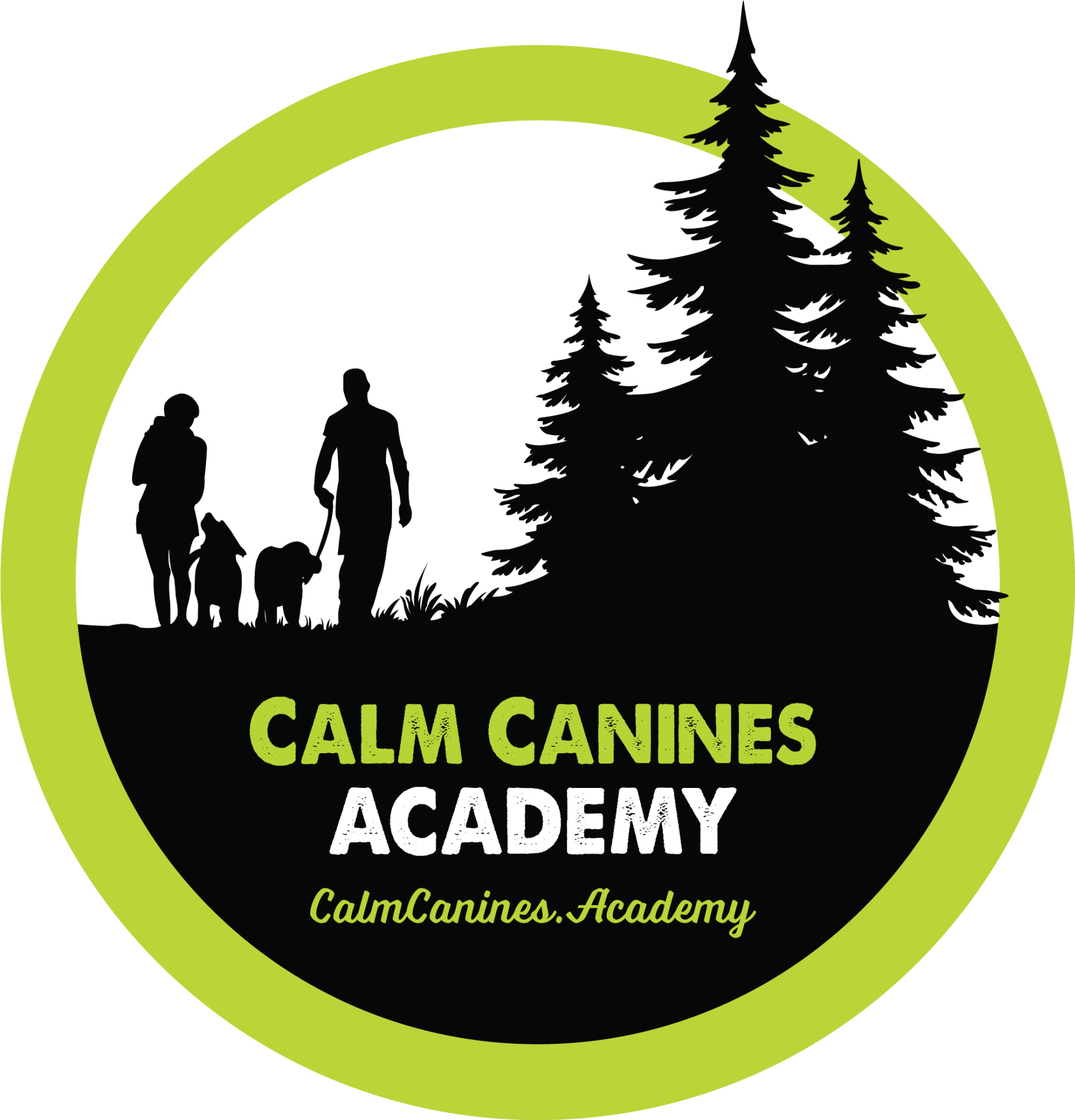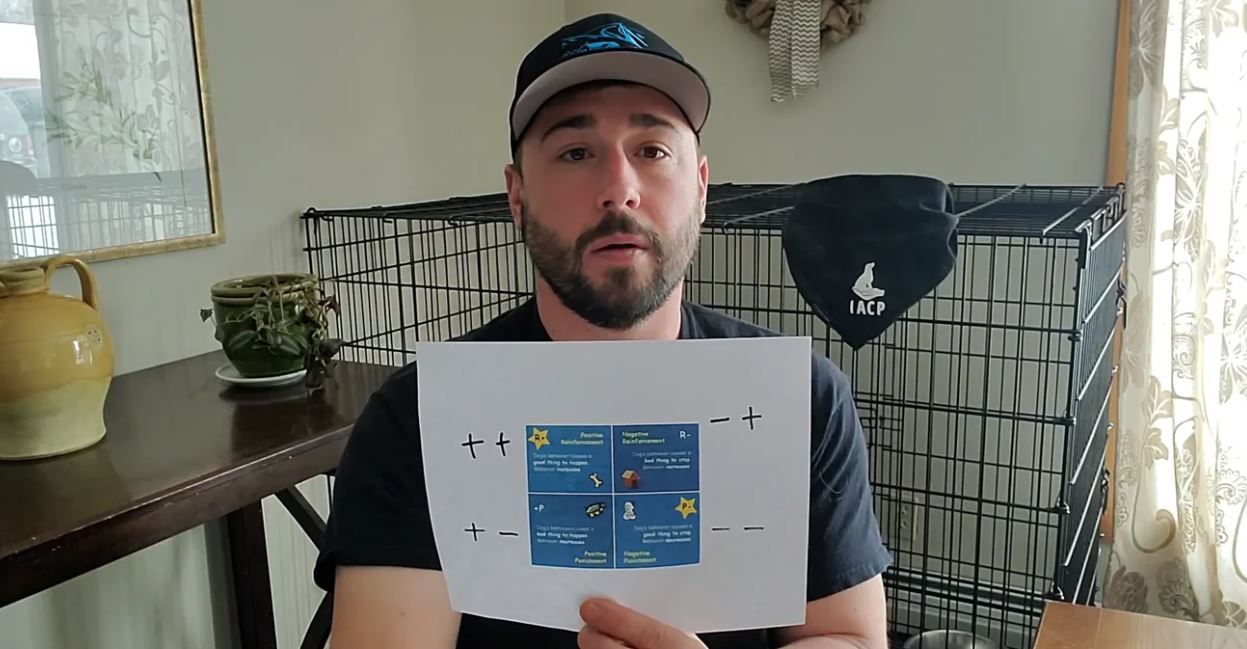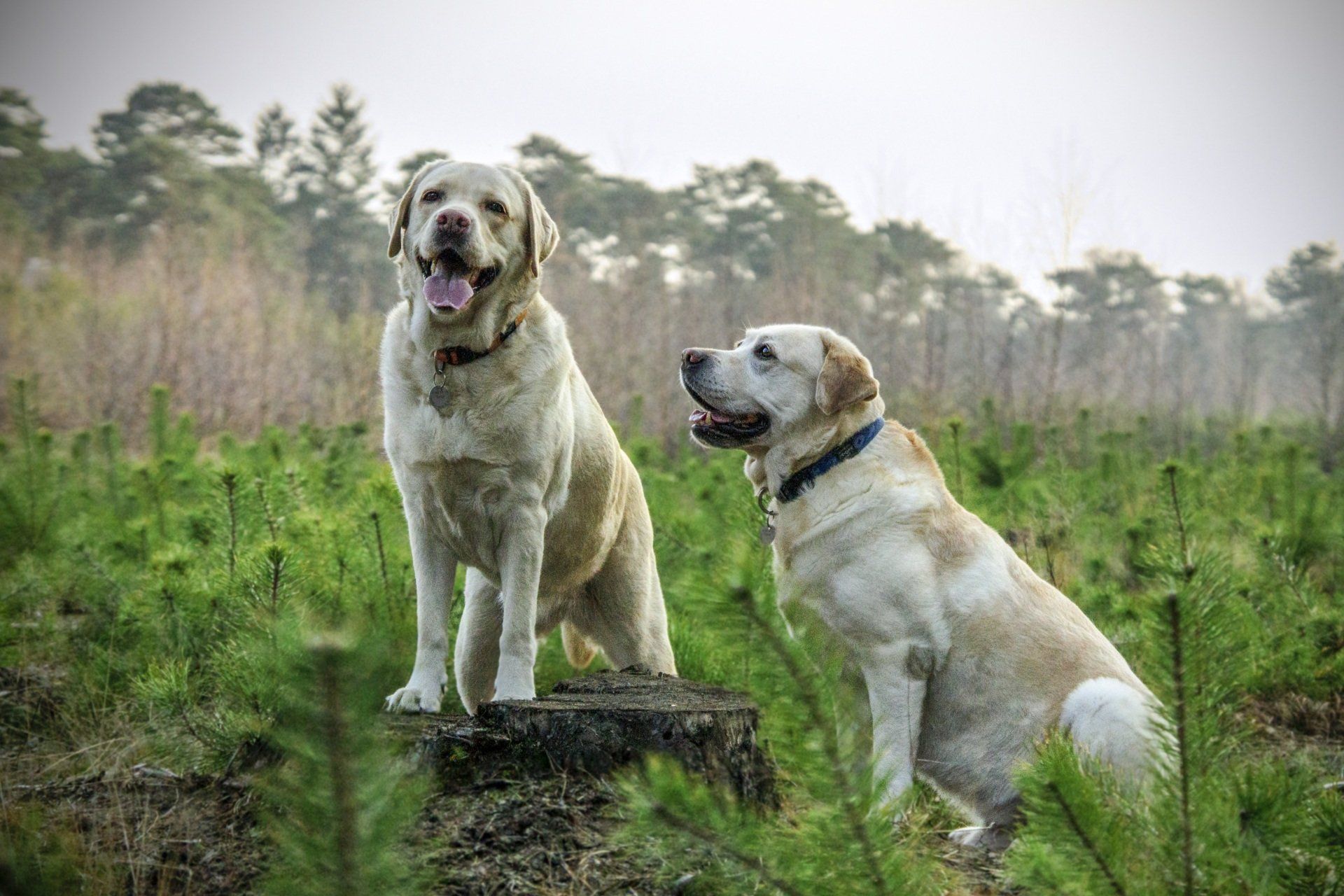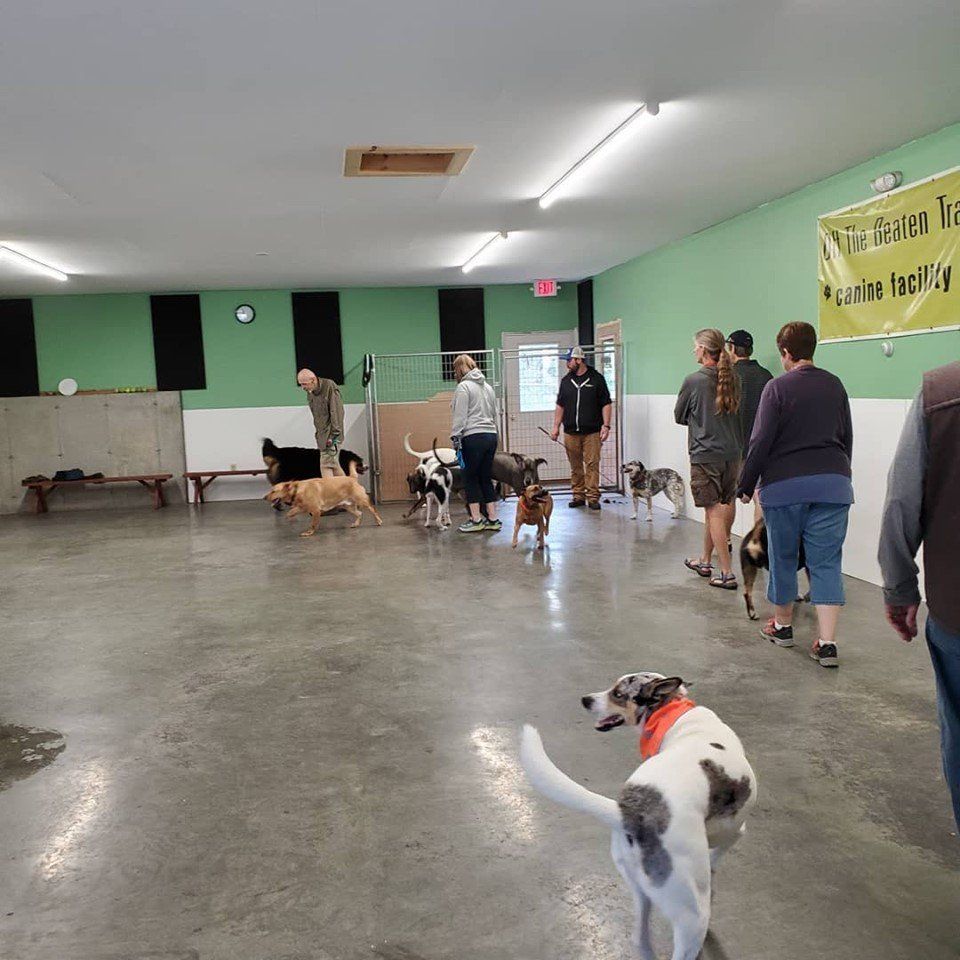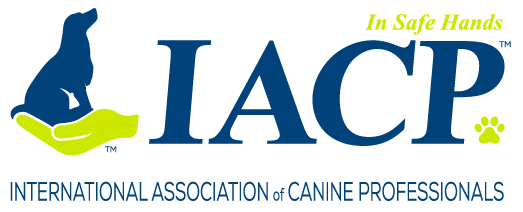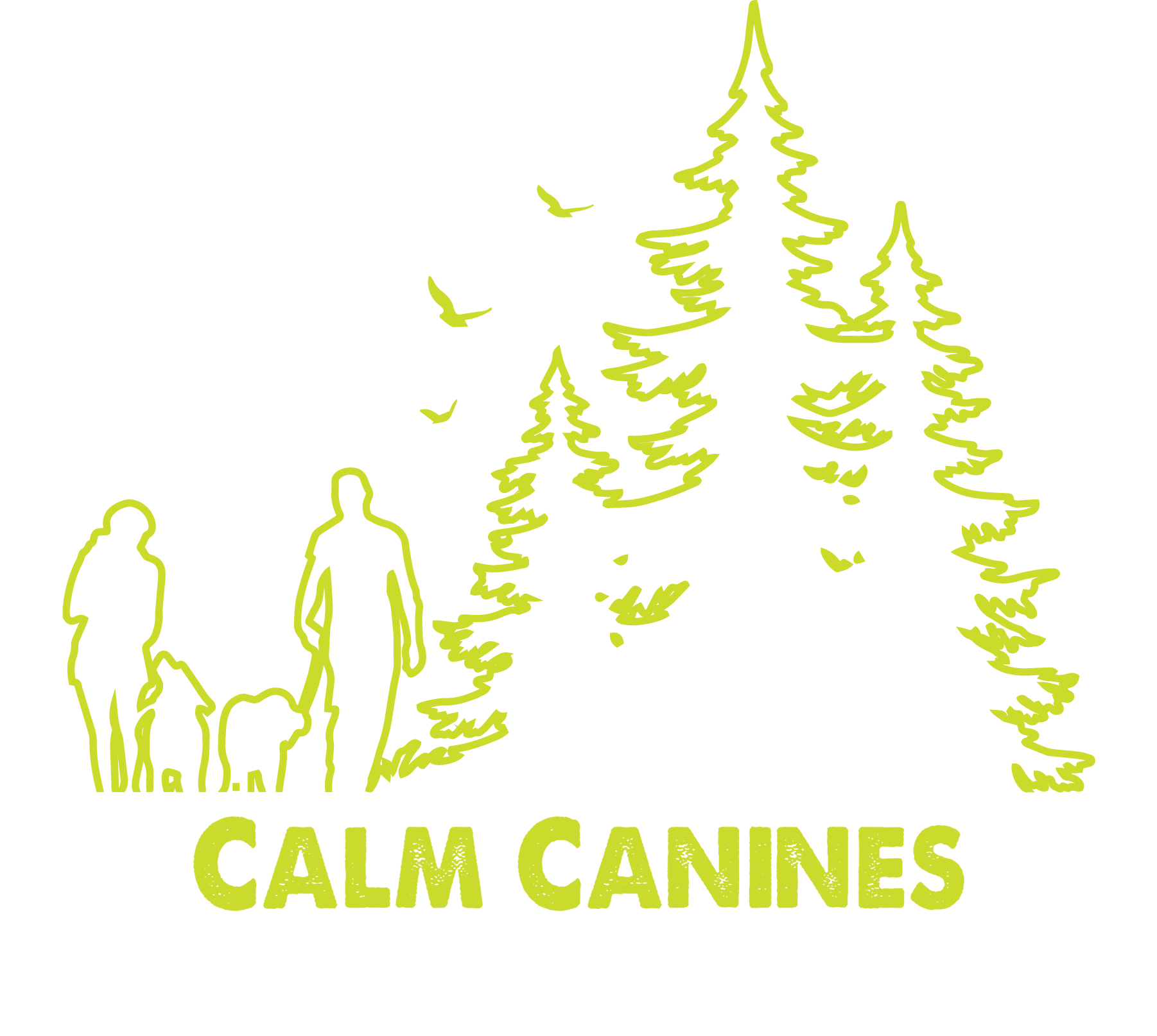INTRODUCING DOGS
Start with one dog that you are very familiar with. You’d ideally be looking for a social dog that isn’t very excitable. You are hoping to use the calmer energy as a base line reading for each of the dogs you are evaluating. You want to have your calm dog in an open area and be there with enough time for the dog to settle into the environment (going around the area smelling).
The environment that you are in should be completely secure so there is no way for a dog to escape. The entrance to this area MUST have a cell immediately surrounding the door; this will serve as an “airlock” or “cell”. This becomes a space to utilize for evaluations or separating dogs. Ideally this space would be roughly 5 ‘x 5 ‘.
Make sure the “airlock” is secured before bringing the evaluation dog into the “airlock”. I like to start with both dogs off leash; I think it’s important to watch the dogs meet through the “airlock” in their most natural way possible. I am watching for a number of things as the dogs first come together. The first thing I am paying attention to is the space between the dogs. This is a language in its self and when you get into dog behavior, it’s classified as “distance increasing” or “distance decreasing” signals. This refers to the amount of space between the two dogs, either go away or come closer. You are watching for these signals as the dogs come closer. Dogs with poor social skills don’t usually have the best space etiquette and are more apt to go to higher levels quicker with back off signals.
While the two dogs are meeting through the “airlock” you are also observing how they position their bodies to each other. Face to face meetings are not ideal when first meeting a new dog; this can be a challenge to the other dog. You want to see this go away and the dogs looking to smell each other’s rear end. If the dogs get to smelling each other, you might notice that one dog isn’t comfortable with the other dog smelling them. This is usually a good cue the dog doesn’t have the best social skills and might be a bit snappy at the beginning. I allow enough time to pass until the point where the dogs no longer care about each other. This is ideal. When creating a well socialized dog, it’s important to remember there needs to be an off switch and the dog need to be able to find it themselves. In a perfect situation when the dogs stop interacting through the fence is when I let the other dog into the play yard. If there isn’t as much pressure to interact when they first get together, it makes it a lot easier for the dogs to get acquainted.
If I am unfamiliar with the dogs I will have the new dog on leash when I first bring the dogs together, I will have a loose leash while the dogs greet each other. I want to allow the dog’s time to interact with each other but then I keep them moving. I don’t want to create what is referred to as “the awkward handshake”. We have all had that experience, where a handshake just goes on for too long. If you feel this situation happening with the dogs, make them move on. You don’t want to create dogs that just become fixated on another dog.
This process will continue to repeat throughout the day. The same dog might go through the process multiple times before you finally allow the dog to join the group. There is no time limit when it comes to creating a social dog. You are acting as a guide for shaping behavior and you have to allow time to pass.
